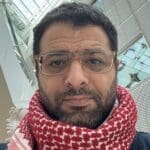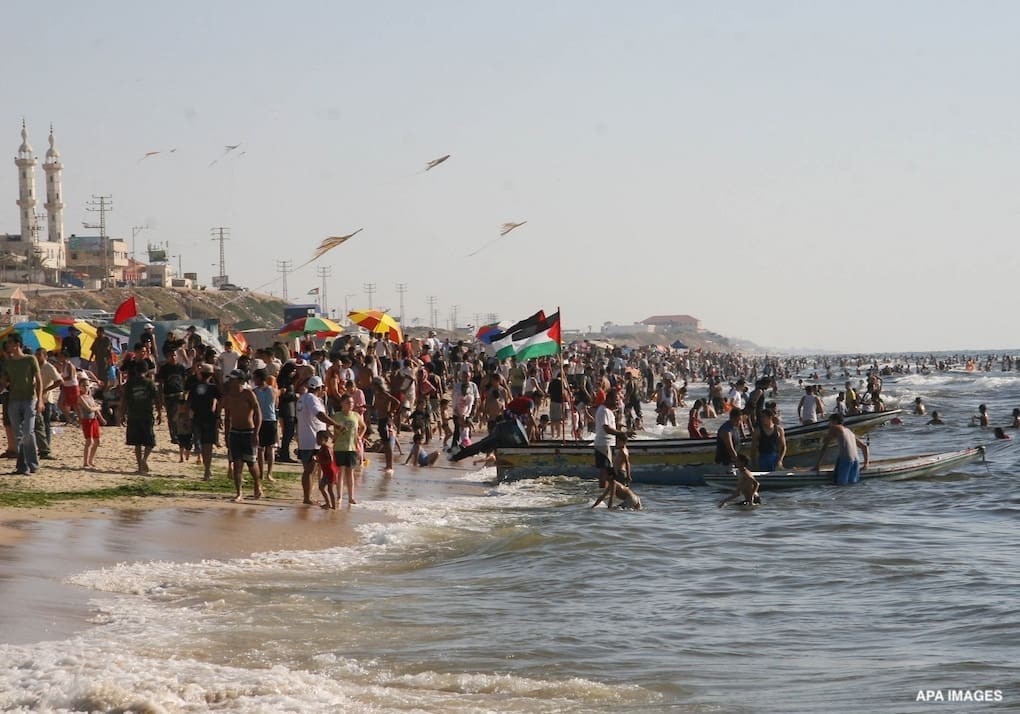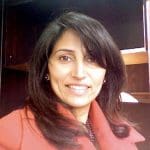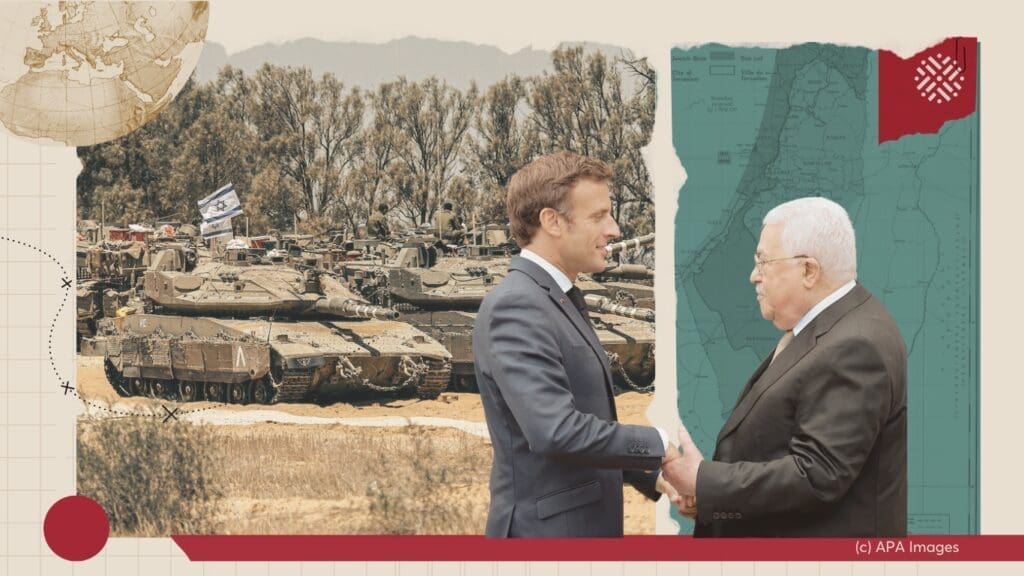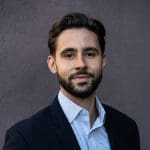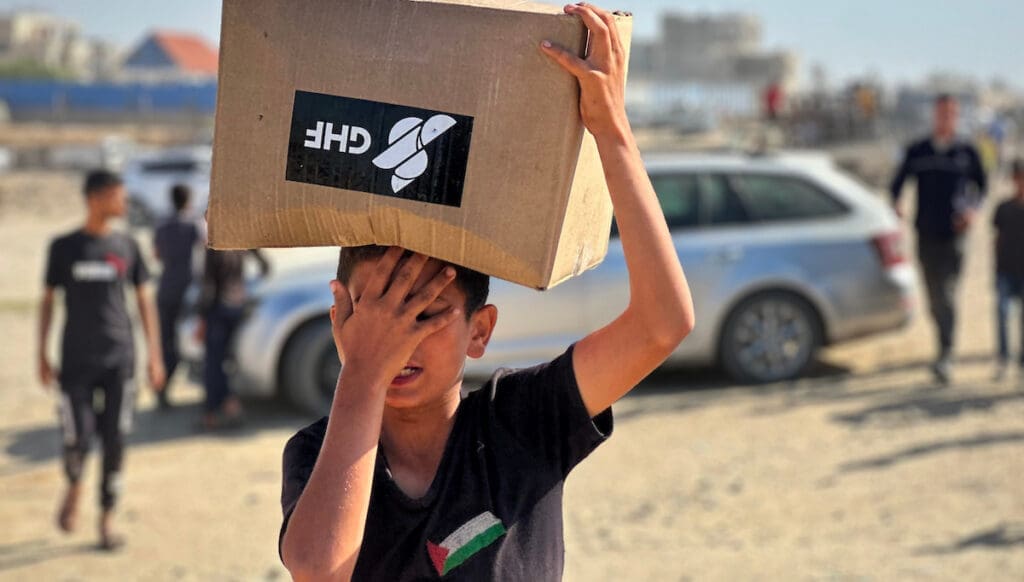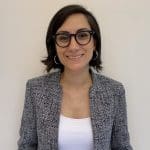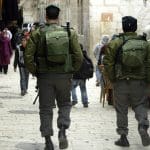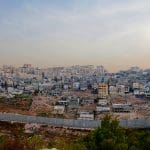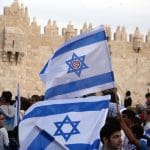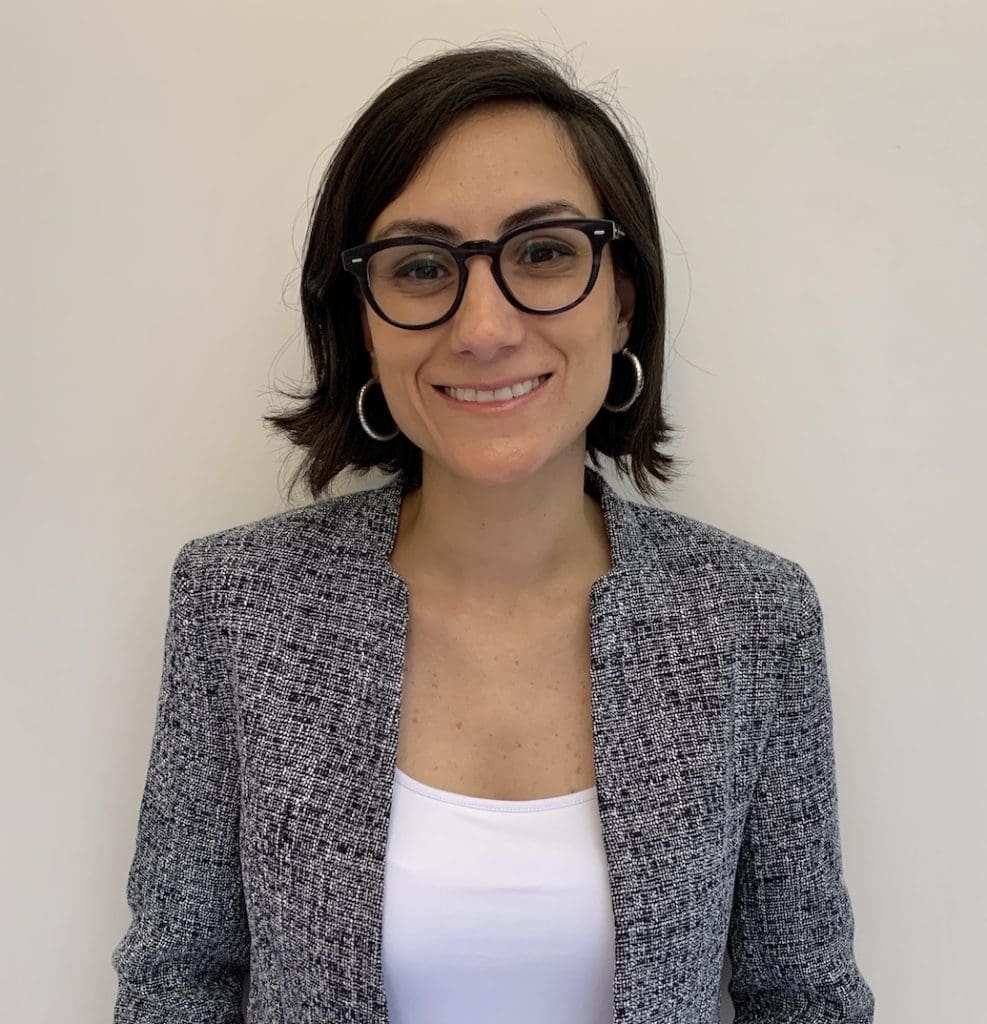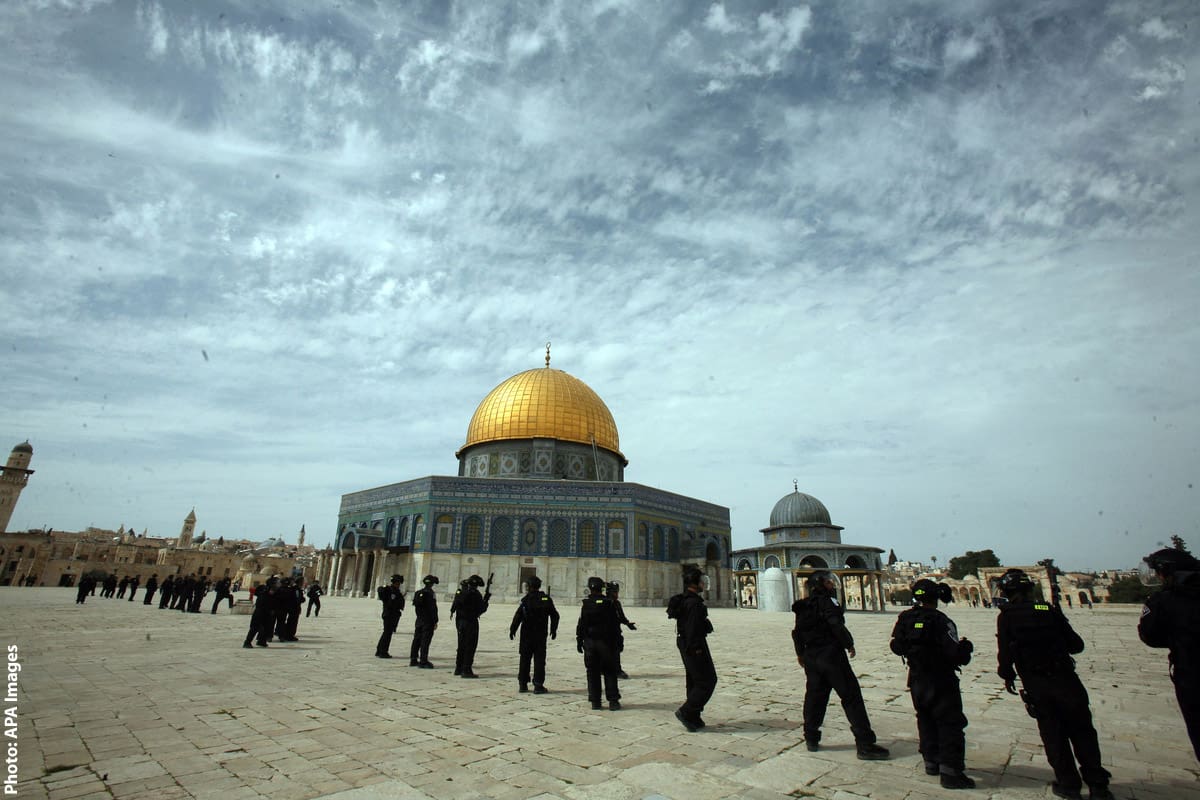
Overview
The escalating clashes between Israeli settlers and Jerusalemite Palestinians are the harbingers of a major eruption with incalculable consequences. Immediately billed as a “religious war” by the media and Israeli right wingers, they are in fact the outcome of longstanding Israeli plans to Judaize the city and empty it of its Palestinian inhabitants. Al-Shabaka Policy Member Nur Arafeh analyzes the major changes that Israel has illegally imposed on Jerusalem and addresses the Palestine Liberation Organization (PLO)/Palestinian Authority’s (PA) effective abandonment of the population to fend for itself. She concludes with policy recommendations to the PLO/PA, Palestinian academics and analysts, and the international solidarity movement.1
The Myth of Religious War
Jerusalem has been thrust into the spotlight due to the recent clashes between Israeli settlers and Palestinians at the Al-Aqsa Mosque. Also referred to as Al-Haram al-Sharif or the Noble Sanctuary, the compound contains Al-Aqsa itself, Islam’s third holiest site, and the Dome of the Rock, where Prophet Muhammad is said to have ascended to heaven. Jews revere the site in the belief that it was once the location of two ancient Jewish temples.
A number of ultra-Orthodox Jews have been repeatedly violating the status quo that has been in place since 1967 by making incursions inside the Al-Aqsa compound and calling for Israel to build a third temple on what they term the Temple Mount.2 A video posted recently on YouTube by the Temple Institute, which is part of the so-called Temple Mount and Land of Israel Faithful Movement, depicts a third temple replacing Al-Aqsa Mosque and the Dome of the Rock.
The recent clashes between Palestinians and Israeli settlers and police in Jerusalem were punctuated by horrific attacks like the kidnapping and murder of the Palestinian youth, Mohammed Abu-Khdeir in July 2014. After Yehuda Glick, a key figure in the Temple Institute and a strong advocate of its messianic scheme, was allegedly shot by a Palestinian, members of the Temple Mount Movement made further incursions into Al-Aqsa, and on 30 October 2014 Israel banned prayers in the compound for the first time since 1967. Tensions in Jerusalem reached boiling point after an attack by two Palestinians on an ultra-Orthodox synagogue on 18 November 2014 left four Jews and a Druze police officer dead. The New Year began with a warning by the Mufti of Jerusalem of an Israeli organization’s plans to register Al-Aqsa Mosque as Israeli property.
But can this really be described as the start of a religious war? Has the political conflict indeed been transformed into a war of beliefs? According to The Guardian: “This is what a religious war looks like.” A Palestinian Al-Hiwar commentator agreed. Deputy Knesset Member Moshe Feiglin went even further and described it as a global fight “against the evil forces of the most extreme Islam.” Worse, the Temple Mount Movement stands reality on its head by proclaiming that one of its long-term objectives is to “liberate the Temple Mount from Arab [Islamic] occupation,” thus portraying the colonizers as the colonized.
Yet the framing of these events as a religious war not only ignores the reality of the power imbalance between the colonizer and the colonized, but also fails to address the history and context in which the recent events have unfolded.
Israel’s Longstanding Targeting of Al-Aqsa Mosque
Jewish religious law prohibits Jews from praying in the Al-Aqsa compound; Jews are only expected to revere the site, but not to visit or own it for fear of profaning the inner sanctum of the alleged Temple, and are to pray at Al-Buraq Wall (renamed the Western Wall). Nevertheless, extremists have early on targeted Al-Aqsa Mosque with a view to rebuilding the Temple. In 1982, Meir Kahane, leader of the far-right Kach party, marched on the compound holding plans of the Temple to be built on the ruins of Al-Aqsa. In 1990, 21 Palestinians were killed and 150 were injured in clashes with members of the Temple Mount Movement who attempted to enter Al-Aqsa and place the foundation stone for the Temple. In 1996, Israeli excavations and the digging of tunnels near Al-Aqsa sparked violence that resulted in the killing of 70 Palestinians and 15 Israeli soldiers.
The Israeli government has also been supporting efforts to ensure Jewish control over the compound. Almost half of Likud party members support the Temple Mount Movement, which has recently won funding from the government. Between 2008 and 2011, the Temple Institute received an annual donation of $107,000 from the Ministry of Education and the Ministry of Culture, Science, and Sports. In 2012, an educational unit in the Temple Institute was offered an additional $50,000 from the Ministry of Education.
However, the actions of specific groups to take control of Al-Aqsa should not be seen as isolated incidents, but rather as part of a larger Zionist project to Judaize Jerusalem and ensure Jewish supremacy over the city.
Creation of a New Reality in Jerusalem
Since the occupation began in 1967, Israel has been committed to transforming a multi-religious and multi-cultural city into a “reunified” Jewish city under the exclusive control and sovereignty of Israel. It has fast-tracked the Judaization of the city via policies that impact on the geographical and physical space and are designed to circumvent the “demographic threat” posed by Palestinians.
From the outset in 1967, Israel illegally annexed 70 km2 of West Bank territory, including East Jerusalem (6.5 km2), such that it maximized the area of land expropriated while minimizing the number of Palestinians. It also razed the Arab neighborhoods of Bab al-Magharbeh and Harat al-Sharaf to build the Jewish Quarter, Al-Buraq Wall plaza, houses for settlers, and Jewish synagogues. Israel also reshaped the physical landscape of Jerusalem by constructing a ring of settlements around the city, linked to bypass roads to ensure geographic continuity with other Israeli settlements in the West Bank.3
The ensuing physical and political fragmentation of Jerusalem went hand in hand with its economic isolation long before Israel embarked on the construction of the Apartheid Wall in 2002, which redrew the borders away from the pre-1967 armistice line. The construction of the Wall was deliberately designed to cut inside the city and exclude areas populated by Palestinians as a means to ensure a Jewish majority.
To deal with the “demographic threat” posed by Palestinians, Israel designated Palestinians living in Jerusalem as “permanent residents” – a civil status usually reserved for foreign citizens and which does not guarantee residency rights. On this basis, resident IDs are often revoked. Between 1967 and 2013, Israel revoked the ID cards of more than 14,309 Palestinian residents. According to the 2003 Temporary Amendment to the Citizenship and Entry into Israel Law (amended in 2005 and 2007), West Bank Palestinians married to Jerusalem residents do not qualify for residency status and are only granted temporary permits in exceptional circumstances. In contrast, Jews who immigrate to live in Jerusalem are granted immediate citizenship, reflecting the apartheid nature of the Israeli regime.
While strengthening the Jewish presence in Jerusalem, Israel has sought to contain the urban and demographic expansion of Palestinians via discriminatory urban and zoning policies consistent with ethnic cleansing. More than one third of land in Palestinian neighborhoods has been classified as “open landscape areas” where building is prohibited, constricting Palestinian building to only 14% of the land of East Jerusalem and causing an acute housing crisis. Moreover, since 1967, Israel has destroyed 1,673 housing units, affecting around 8,000 people between 1967 and 2013. With the implementation of all these policies, Israel is aiming to achieve a ratio of 30% “Arabs” and 70% Jews within the Jerusalem municipality.
Discriminatory Israeli policies are also apparent in the discrepancies in service provision between Palestinian and Jewish neighborhoods. Less than 10% of the municipal budget is allocated to Palestinian districts despite Palestinians paying the same amount of arnona (property) tax as Jewish citizens.
Judaization has been accompanied by “de-Palestinianization” to eradicate the Palestinian identity in Jerusalem. For example, Sultan Suleiman al-Qanuni Street (a sultan of the Ottoman Empire) was renamed King Solomon Street, and the Wadi Hilweh district of Silwan was renamed “the city of David.” Furthermore, unnamed streets in Palestinian areas were recently given Arabic names that are devoid of political and national connotations. This renaming process is linked to the re-writing of history in line with Zionist dicta, a process in which archeology and excavations are exploited to create a fictitious Jewish history of the city, while the heritage of other eras is ignored.
Israeli control over the historical narrative extends to the educational system. Since March 2011, Israel has attempted to force Palestinian schools that receive budget allocations from the Israeli authorities to use textbooks prepared by the Jerusalem Education Administration (so far, five have done so). These books present Palestinian students with a one-sided history and censor any topic related to Palestinian identity and heritage.
Palestinian institutions in Jerusalem have also been targeted to erode Palestinian activism in the city. Since 2001, Israel has closed at least 31 Palestinian institutions, including the Orient House, the former headquarters of the PLO, and the Chamber of Commerce and Industry. This climate of repression led many institutions to relocate from Jerusalem and caused a huge institutional vacuum, accompanied by an absence of leadership.
Other steps to de-Palestinianize Jerusalem include the latest five-year socio-economic “development” plan for Palestinian areas approved in June 2014 by the Israeli cabinet. This plan focuses on gaps in infrastructure, education, social welfare, and employment between Palestinian and Jewish neighborhoods in an apparent attempt to encourage the integration of Palestinians within Israel and bolster security by thwarting “violence” and “stone throwing.”
In other words, development is a tool to strengthen Israeli control over Jerusalem and suppress Palestinian steadfastness and resistance to the Israeli occupation. Thus, the plan cannot be seen as an initiative to address the deteriorating socio-economic conditions of Palestinians in Jerusalem in terms of the extremely high poverty rate (75% of Palestinian residents live below the Israeli definition of the poverty line); collapsing trade and tourism sectors; lack of investment; depleted health and educational services; high unemployment rates (16.7% in 2014); and high costs of living.
In this context, Palestinian clashes with Israeli Jews should be seen as acts of resistance and desperation within the larger historical struggle of Palestinians against occupation, apartheid, ethnic cleansing, land theft, dispossession, forced displacement, and economic marginalization. The recent intensification of incursions at Al-Aqsa and calls to build a third temple simply ignited the flames of these smoldering emotions. To focus on the religious dimensions of the recent unrest while overlooking its root causes would only lead to further violent clashes and eruptions of unprecedented magnitude. Religion is being exploited to serve Israeli political and national goals as it entrenches its colonial apartheid policies.
The Leadership Vacuum Leaves Palestinians Powerless
The recent unrest in Jerusalem, in which Palestinians have resorted to new forms of resistance such as using vehicles and fireworks, should be seen within the broader context of a city that lacks political leadership. The PA has demonstrated a lack of genuine investment in Jerusalem since signing the 1993 Oslo Declaration of Principles, of which the PA was itself a product. This was already evident when the PLO accepted to defer the issue of Jerusalem to the negotiations on the final status of the Occupied Palestinian Territory (OPT). While the PLO/PA clings tightly to the farcical peace process, Israel has entrenched its occupation and control over Jerusalem.
In a clear divergence from its rhetoric of support, the PA allocates a negligible budget to the city. The total budget allocated to the Ministry of Jerusalem Affairs and to the Jerusalem Governorate was around $15 million in 2014, representing 0.4% of the total PA budget expenditure for that year. Compare this shameful and insignificant budget allocation to the supposed capital of the Palestinian state with 27% of the budget allocated to the security sector in the same year. Moreover, most of the budget is disbursed in the areas of Jerusalem that fall under Palestinian administration and outside the Wall. Locations such as Shu’fat and Beit Hanina that lie within the Israeli municipal boundaries of Jerusalem rarely receive any funds.4
This meager budget is the main reason that prompted Hatem Abdel-Qader to resign 40 days after his appointment as the first minister for Jerusalem Affairs in 2009. He noted that the Palestinian “government fails to uphold its commitments to the city, which is undergoing a difficult period.” Another Palestinian intellectual, who served as a PA representative in Jerusalem, also argued that, “The PA’s behavior was never in line with its stated goals. It has continuously failed to implement the numerous studies and plans made for the city.”5
While Israel is turning its vision for Jerusalem into reality via numerous policies and master plans (2020, 2030, and 2050), a coherent strategy for the future of the city by the Palestinian leadership remains absent. This was apparent in the omission of a development plan for Jerusalem in the National Development Plan 2014-2016. Although it is true that the document refers back to the Strategic Multi-Sector Development Plan for East Jerusalem (SMDP) 2011-2013 issued by the Jerusalem Unit at the President’s Office, the SMDP was published in 2010 and requires updating. Moreover, the Jerusalem Unit itself, which was previously allocated most of the funds for Jerusalem, was closed in 2010.6
More significantly, the development approach used in the SMDP disconnects development from political and colonial realities; it reduces Palestinian struggle to that of “survival” instead of freedom and takes the Israeli occupation as given rather than seeking to end it. As the introductory section of the SMDP put it: “How can the PLO assist Jerusalemites to survive and thrive within the existing context in order to have a solid foundation for the capital of the future Palestinian state?” (Emphasis added).
The lack of genuine official interest in the city, the emergence of Ramallah as the de facto capital, and the absence of Palestinian political leadership in Jerusalem leave Palestinians feeling abandoned and resentful towards the PLO/PA. PA President Mahmoud Abbas is still paying lip service to Palestinians in Jerusalem, while refusing to end security collaboration with Israel or to support non-violent means of resistance, such as the boycott of all Israeli goods.
Meanwhile, Israel has responded to leaderless Palestinian protests and resistance with characteristic force that includes land confiscation, house demolitions, and collective punishment, such as raids on homes, spraying neighborhoods with putrid water, and mass arrests. For example, between June and September 2014, approximately 700 Palestinians were arrested in Jerusalem, the majority of them children, according to Al-Dameer Association for Human Rights.7 Israeli settlers who commit brutal crimes against Palestinians undergo no such punishment. In fact, the Israeli government has eased gun restrictions and increased funding to protect settlers in Jerusalem – additional evidence of the institutionalized discrimination to which Palestinians are subjected.
Protecting Jerusalem and Its Palestinians
The current turmoil in Jerusalem is the result of colonial subjugation, institutionalized discrimination, dispossession, and Israel’s establishment of facts on the ground to ensure it maintains Jewish supremacy over the city. Israel’s plans should thus be resisted locally and internationally, primarily by increasing their cost to Israel. The apartheid system in South Africa only began to unravel once the costs of preserving white supremacy became too high to bear.
First and foremost, Palestinians need proactive leadership that will propel the status of Jerusalem to the forefront of government commitment and to the heart of the national struggle as a matter of urgency. It is vital that Palestinians project a clear vision of Jerusalem to counter the prevailing Israeli vision. Information and communication are key tools to counter Israel’s re-writing of history and silencing of the Palestinian narrative.
In particular, Palestinian leadership should confront Israeli attempts to frame its colonial policies in religious terms and should remind the world that the core issues are those of occupation, dispossession, and land theft. It is imperative to challenge the power of the Israeli discourse by exposing its shameful record of oppression in Jerusalem and the rest of the occupied territory. The PLO/PA should also further capitalize on the hard won status in international organizations such as UNESCO to take legal steps to protect Al-Aqsa and the Old City in Jerusalem.
Secondly, academics and policy analysts can play a crucial role in putting Jerusalem in the vanguard. To date, Palestinian intellectuals have been biased towards the analysis of socio-economic development in the West Bank, and, to some extent, the Gaza Strip, to the detriment of discussion about Jerusalem. Palestinians must emphasize Jerusalem in their discourse and move beyond mere diagnosis of problems to devise solutions. The concept of development under occupation itself needs to be revised and redefined as a form of economic, political, and social resistance embedded in the larger historical struggle of Palestinians for self-determination, freedom, and justice.
Finally, the local boycott of Israeli goods and services is a vital means of resisting the Israeli occupation. Not only is it a moral duty for every Palestinian but also the boycott of Israeli products increases the cost of Israel’s apartheid system and enhances the productive capacity of the Palestinian economy. In parallel, thought must be given to ways to develop a Palestinian economy capable of resisting integration and dependence on the Israeli economy and that can pave the foundations for a solid political base from which an emancipated and self-determining society may emerge.
At the international level, the Palestinian-led Boycott, Divestment, and Sanctions (BDS) movement and the pressure this imposes on Israel worldwide should be maintained and intensified. Arab countries need to engage in a significant way to isolate Israel for its designs on Jerusalem and its multiple human rights violations.
Without concerted efforts by Palestinians with Arab and international support to uphold Palestinian rights in Jerusalem, the present small fires in the city could turn into a conflagration with permanent damage to Palestinian and Arab heritage in the city and to the Palestinian Jerusalemite presence in the city of their ancestors.
- Al-Shabaka publishes all its content in both English and Arabic (see Arabic text here.) To read this piece in French or Italian, please click here or here. Al-Shabaka is grateful for the efforts by human rights advocates to translate its pieces into French and Italian, but is not responsible for any change in meaning.
- Following Israel’s occupation and illegal annexation of East Jerusalem in 1967, the control of the mosque and Noble Sanctuary were transferred to a Jordanian Islamic _waqf_ (trust). The 1994 Wadi Araba agreement between Jordan and Israel stipulated Jordan’s guardianship over all Muslim holy shrines in Jerusalem.
- Two plans were drafted specifically for this purpose: The Greater Jerusalem Project intended to create a “greater Jerusalem” extending over an area of 600 km2; and the E1 plan called for the expansion of the Ma’ale Adumim settlement to ensure its connection with Jerusalem. Both plans would cause geographical discontinuity between the northern and southern parts of the West Bank and would further isolate the eastern part of Jerusalem from the rest of the Occupied Palestinian Territory.
- Author’s interview.
- Unless otherwise stated, all quotes come from interviews conducted by the author in 2014.
- Author’s interview.
- Author’s interview.
